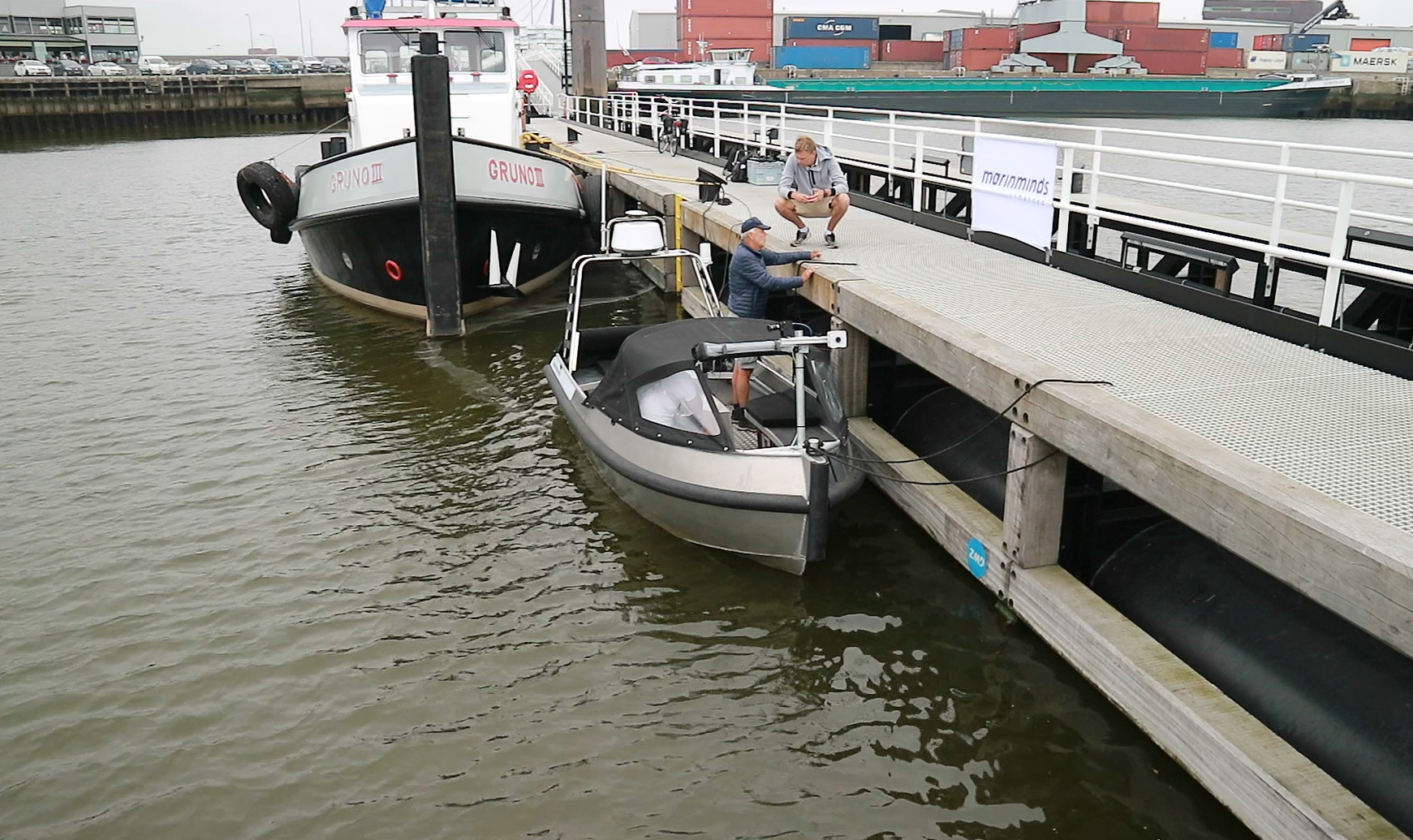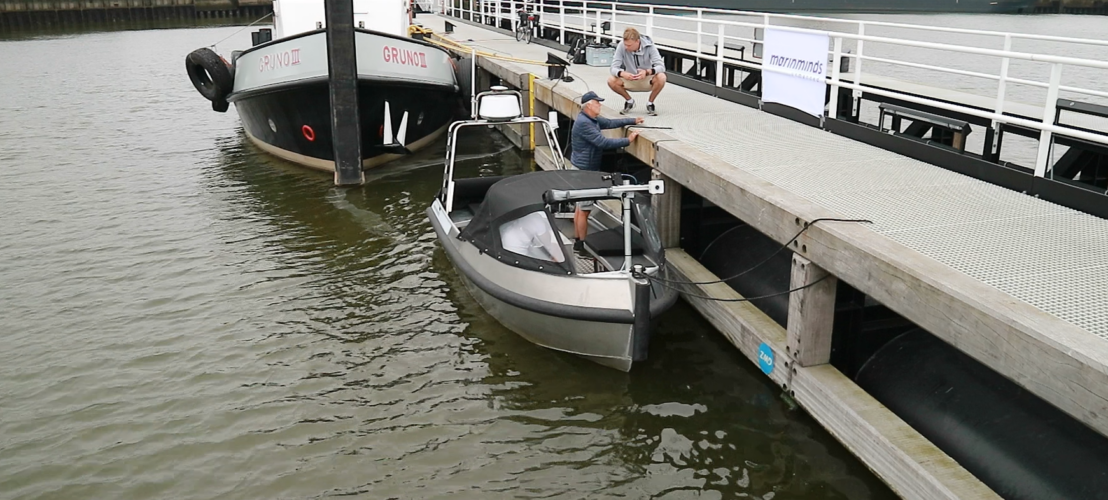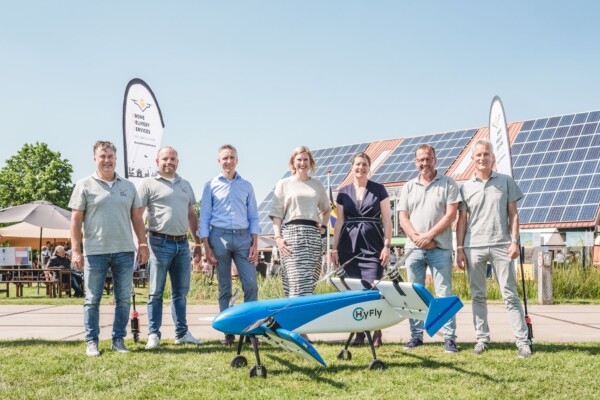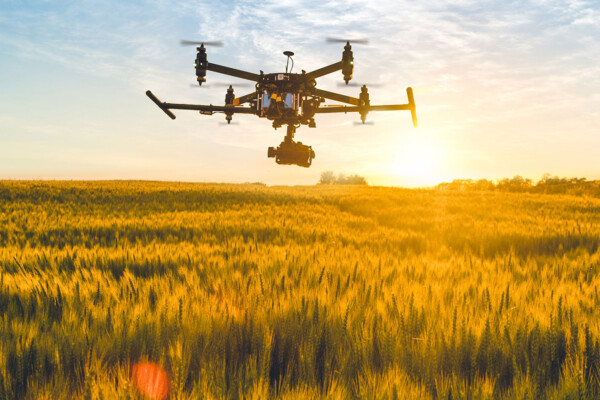Marinminds, KPN, Groningen Seaports and Huawei have jointly conducted a trial in the context of a 5G autonomous shipping pilot within 5Groningen, an initiative of Economic Board Groningen.
A 5 metres long vessel was equipped with sensors and cameras, which provided real-time data transmission to Groningen Seaports Head Office. It was thus able to navigate autonomously – though with an on-board crew – within the Delfzijl port waters. This 5G pilot aims to – as precisely as possible – identify the criteria which have to be met regarding connectivity as well as to research how real-time data are to be transmitted, all in preparation of fully autonomous shipping.
Want to learn more about 5G and autonomous shipping?
Visit the @north festival on 26th September 2019!
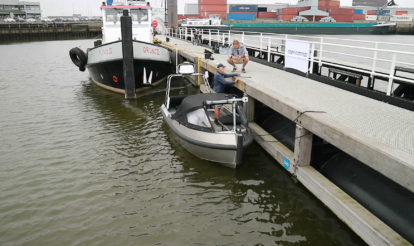
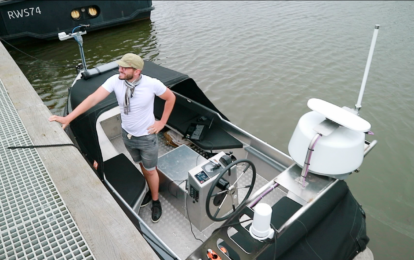
How was the unmanned vessel able to ‘see’?
Its location, course and speed were measured by Marinminds sensors. In addition, Horus View and Explore equipped the vessel with a 360 degree camera, a high-resolution camera and a thermal infrared camera. Together, these devices are able to monitor the water, the quay and objects such as other ships. “Such collected data allows us to create ‘situational awareness’ – an awareness of the environment”, Koenraad de Haas (the owner of Marinminds) states. “This pilot aims to gather real-time data as well as to share it as efficiently as possible with operators, vessel traffic controllers or the harbour master. To this cause, we have developed software, which is able to present the data as transparent as possible.”
Advantages of autonomous shipping
“A great advantage of autonomous shipping is the fact that it offers the possibility to navigate ships with a smaller crew or even completely unmanned”, Henk Zwetsloot, digital innovation manager at Groningen Seaports, states. “A nice aspect in times of cost reduction and labour shortage. In addition, we also expect autonomous shipping to increase the port’s level of safety, efficiency as well as accessibility.”
5G-powered autonomous shipping
In the near future 5G shall offer the possibility of interconnecting sensors and technologies, thus enabling real-time transmission of vast amounts of data. ”Positioning is a key aspect of autonomous shipping”, is Koenraad’s opinion. “At present, positioning and localisation is still conducted via GPS. The downside of this technology is the often limited reception under bridges and at quays. This problem will be resolved by 5G. We also expect that 5G – with its fast communication technology – shall enable remote-controlled shipping.”
More technology, new job characteristics
In the eyes of Henk Zwetsloot – digital innovation manager at Groningen Seaports – digitalisation is going to play an increasingly important role in ports. “Due to on-going technological developments I foresee major changes in the near future. New job requirements are to be met. For instance, pilotage services will have to be adapted to autonomous shipping. We are already assessing what these changes are expected to imply in terms of job requirements for the people working here now.”
Huawei has – in its role as research partner – offered advice during this pilot regarding the use of modem and antenna types as part of the connectivity infrastructure.
KPN provided the mobile connectivity, which in this phase was still based on the current4G/LTE(+) network. For the envisaged follow-up however, (pre-)5G technology shall be used and implemented in collaboration with their partners, all based on the tightened functional requirements assessed in this first trial.
Follow-up
While the pilot-vessel autonomously navigated within the port waters, the data it was transmitting via its sensors and cameras, were presented real-time at the Port Office. After the first phase of the 5G-pilot was thus successfully completed, the collaboration with companies as well as the continuing commercial implementation of autonomous shipping is now our major priority. Even in the near future Koenraad de Haas expects many applications to become available, such as automatic docking of freight ships, yachts and autonomous ferries. “In the next phase, we aim to research what kind of manoeuvres and missions are imperative in order to implement fully autonomous shipping.”
Why 5Groningen?
Economic Board Groningen (EBG) aims to give the Northern Netherlands earthquake zone an economic boost. To this cause, EBG has initiated the 5Groningen programme in order to research in what way 5G can accelerate and create new innovations. 5Groningen has thus managed to put the Northern Groningen region on the (global) map as an ideal living lab for the latest mobile internet generation. Entrepreneurs and non-profit organisations – in collaboration with telecom experts, knowledge institutions and government authorities – have indeed joined forces here regarding the testing of 5G applications.
